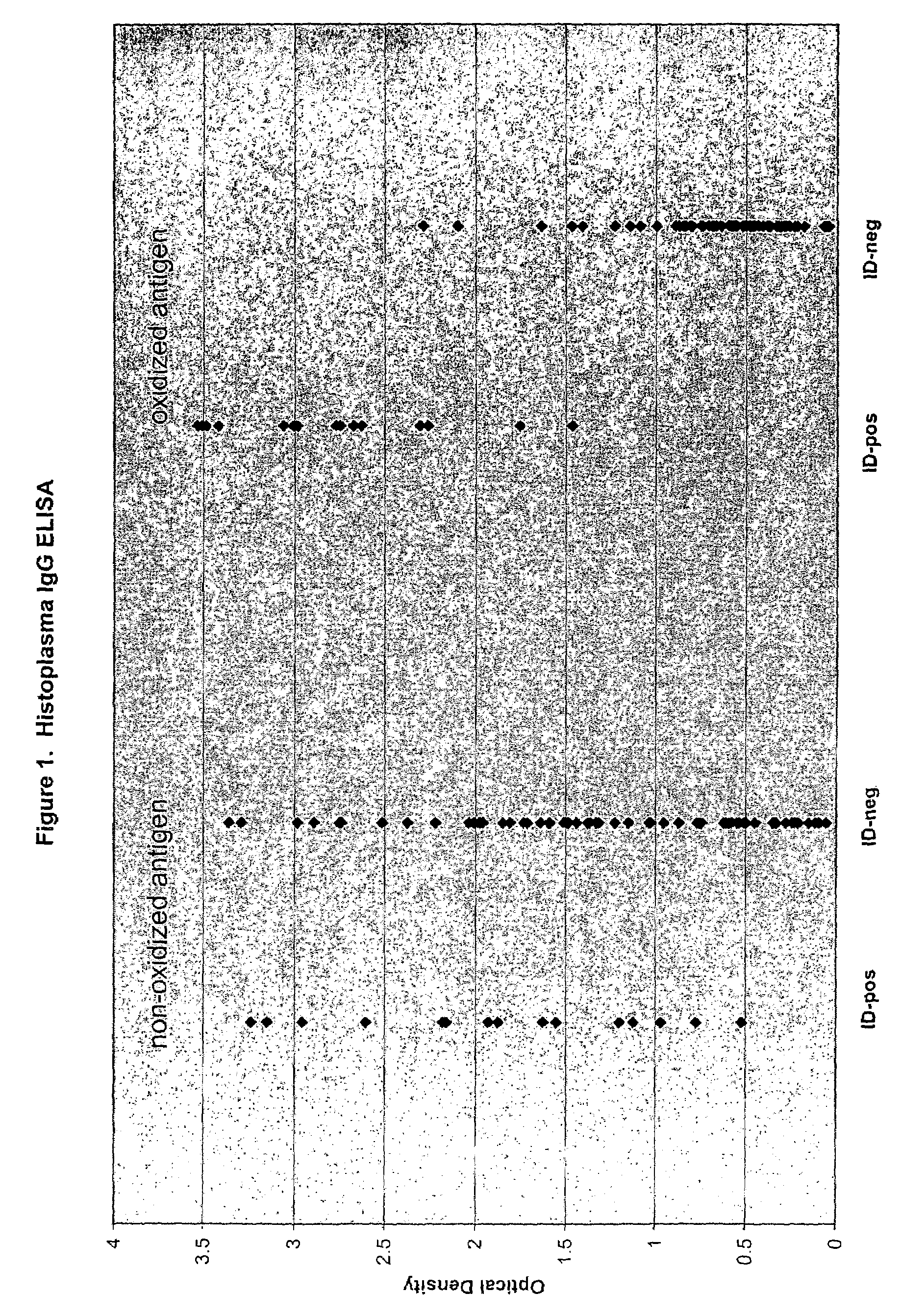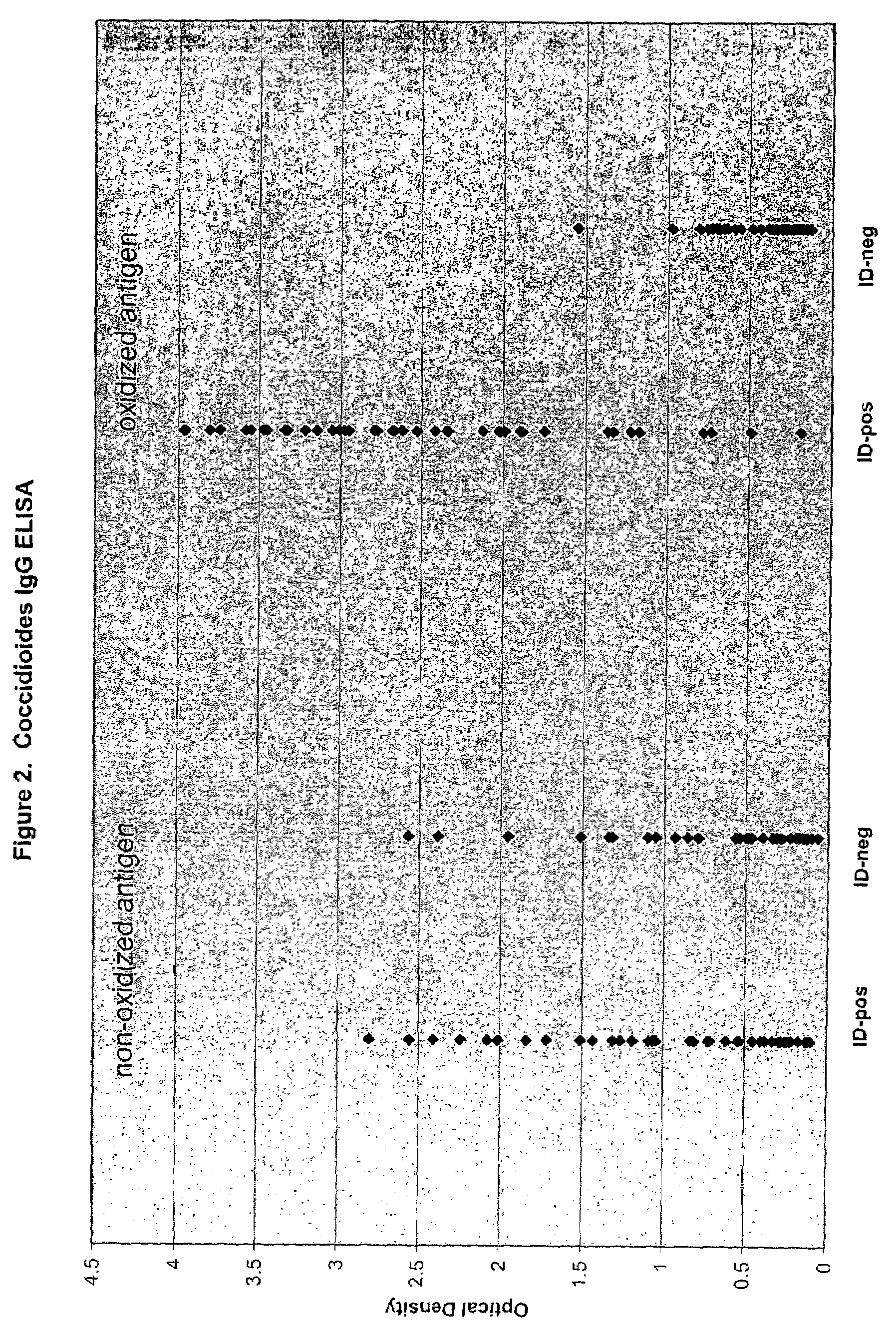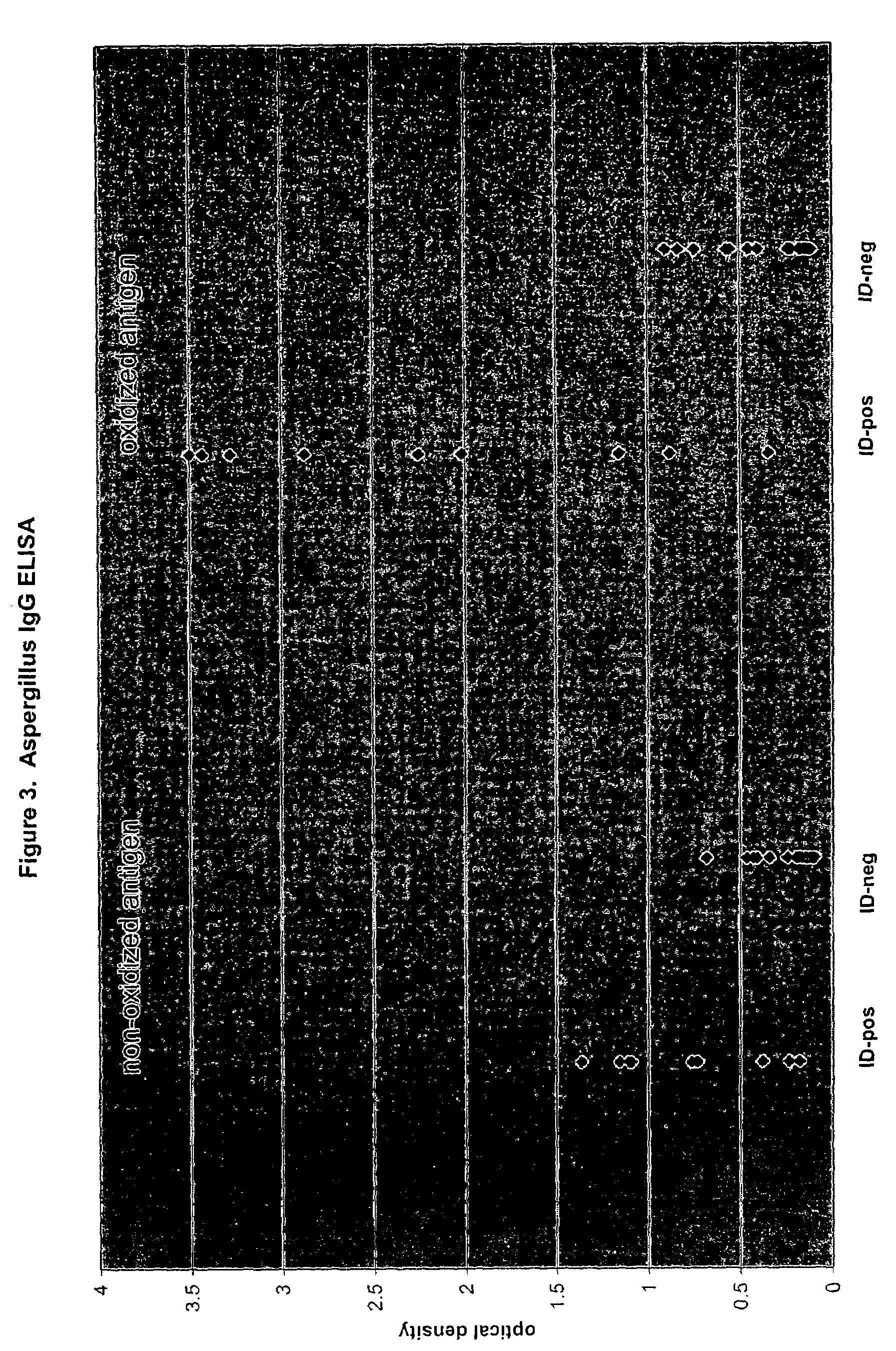Oxidized fungal antigens and methods of making and using thereof
a technology applied in the field can solve the problems of inconvenient use, inconvenient use, and inability to meet the requirements of high-skilled personnel, and achieve the effect of methods, reducing the cost methods, and improving the quality of oxidized fungal antigens
- Summary
- Abstract
- Description
- Claims
- Application Information
AI Technical Summary
Benefits of technology
Problems solved by technology
Method used
Image
Examples
example 1
Detection of IgG Antibodies Recognizing Histoplasma capsulatum
[0077]Histoplasma capsulatum antigen (culture filtrate containing both H and M antigens) intended for use in ID assays was purchased from a commercial source, and adjusted to 20 ug / mL in sodium acetate buffer containing 0.05M periodate (hereafter referred to as oxidized antigen). For comparative purposes, a duplicate antigen suspension in sodium acetate buffer without periodate was prepared (hereafter referred to as nonoxidized antigen). After 2 hours at room temperature, the antigen preparations were diluted 20-fold in PBS to a final concentration of 1 ug / mL, then added to microtiter wells (0.1 mL per well). Thus, some microtiter wells received oxidized Histoplasma antigen, whereas other wells received nonoxidized Histoplasma antigen. After an overnight incubation in the refrigerator, the Histoplasma antigen preparations (oxidized or nonoxidized) were discarded from the wells, and PBS containing 0.1% (w / v) BSA and 5% (w...
example 2
Detection of IgG Antibodies Recognizing Coccidioides immitis
[0082]Coccidioides immitis antigen (culture filtrate containing F antigen) intended for use in ID assays was purchased from a commercial source. Microtiter well preparation and assay performance was the same as described in Example 1 for Histoplasma, with the exception that conjugate was used at a final dilution of 1:5000 rather than 1:10000. The serum panel evaluated for Coccidioides IgG consisted of 80 samples previously tested for Coccidioides antibodies by ID (41 positive, 39 negative).
[0083]FIG. 2 presents the optical density (OD) values obtained following incubation of ID-positive and ID-negative serum samples in microtiter wells coated with nonoxidized and oxidized Coccidioides antigen. When using nonoxidized Coccidioides antigen as substrate, the distribution of OD values for the ID-negative serum group was similar to that observed for the ID-positive serum group. In contrast, when using the oxidized Coccidioides a...
example 3
Detection of IgG Antibodies Recognizing Aspergillus fumigatus
[0085]Aspergillus fumigatus antigen (culture filtrate) intended for use in ID assays was purchased from a commercial source. Microtiter well preparation and assay performance was the same as described in Example 1 for Histoplasma, with the exception that conjugate was used at a final dilution of 1:5000 rather than 1:10000. The serum panel evaluated for Aspergillus IgG consisted of 29 samples previously tested for Aspergillus antibodies by ID (9 positive, 20 negative).
[0086]FIG. 3 presents the optical density (OD) values obtained following incubation of ID-positive and ID-negative serum samples in microtiter wells coated with nonoxidized and oxidized Aspergillus antigen. For both nonoxidized and oxidized antigen, the overall distribution of OD values for the ID-negative group was visually distinct from the distribution of OD values for the ID-positive group. However, the range of difference between the ID-negative distribu...
PUM
 Login to View More
Login to View More Abstract
Description
Claims
Application Information
 Login to View More
Login to View More - R&D
- Intellectual Property
- Life Sciences
- Materials
- Tech Scout
- Unparalleled Data Quality
- Higher Quality Content
- 60% Fewer Hallucinations
Browse by: Latest US Patents, China's latest patents, Technical Efficacy Thesaurus, Application Domain, Technology Topic, Popular Technical Reports.
© 2025 PatSnap. All rights reserved.Legal|Privacy policy|Modern Slavery Act Transparency Statement|Sitemap|About US| Contact US: help@patsnap.com



